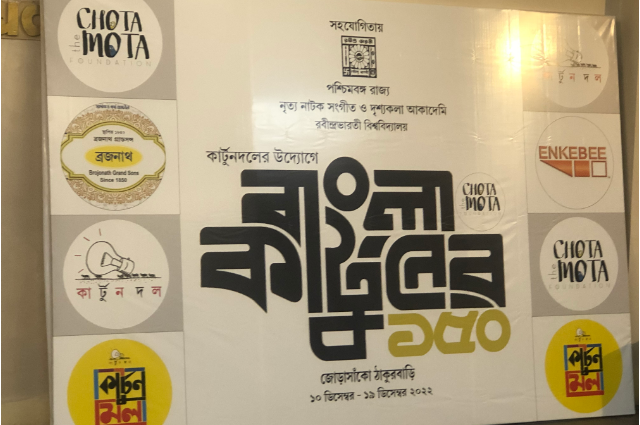
A unique, grandeur cartoon exhibition cum fair was held at one of the majestic halls at “the Jorasanko Thakur Bari” campus of Kolkata in December last year to celebrate the 150th anniversary of Bengali cartoons. The program was a lavish and elaborate as well as highly attractive display of a wide range of cartoons from historical, social, political, and nostalgic perspectives and hence pulled a lot of crowds.
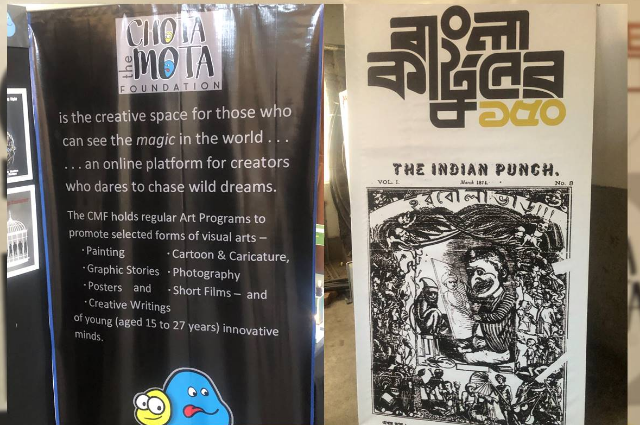
In addition to cartoon displays; regular seminars were conducted during the exhibition by the organizer's Cartoon Dal in collaboration with Rabindra Bharati University, Kolkata on various related themes. The holding of the exhibition at the Jorasanko Thakurbari, the official residents of the famous Tagore family further added to the charm and elegance of this spectacular exhibition cum fair at the sanctum sanctorum of the cultural renaissance of Bengal.
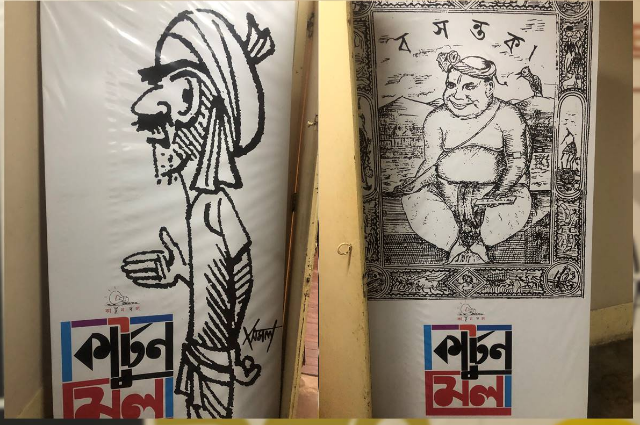
Cartoons as we know are funny but thought-provoking pictorial, animated representations of different stories, characters, situations, persons (politicians, celebrities, religious heads, intellectuals, ordinary citizens, or even imaginary characters), and their moods, actions, surroundings; but, in an artistic, socio-cultural, socio-political, socio-religious as well as historical context. Cartoons can also refer to a full-scale preparatory drawing for a fresco, oil painting, or tapestry.
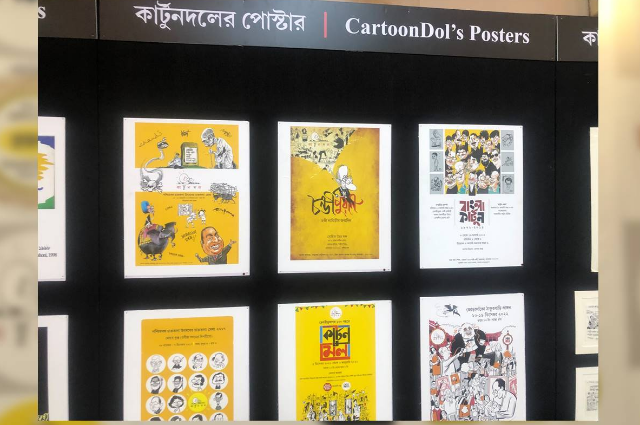
The word we use today comes from the Italian word ‘cartone’, which simply means a large sheet of paper or card. There are various types of cartoons and though they give stimulations to brains and makes one happy and especially small children and kids enjoy them a lot; but, in recent studies, it is also proven that overuse of cartoons by growing children might hamper their thinking process, their touch to reality and sometimes results in adverse effects too.
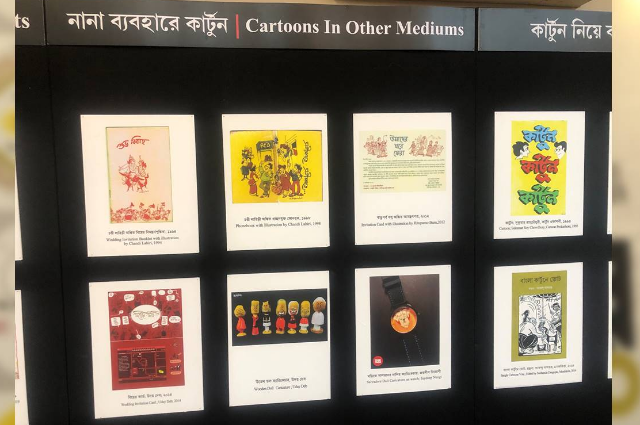
Cartoons are a special tool of self-expression for artists to express their thoughts and views in the simplest; yet witty manner that portrays our contemporary society with a varied perspective. Not just Bengali, cartoons are now common in almost all major Indian languages (Hindi, Urdu, Punjabi, Gujarati, Marathi, Konkani, Sindhi, Odiya, Assamese, Nepali, Tamil, Telegu, Kannar, Malayalam, etc); and are a regular feature of several newspapers, magazines, books, periodicals, and social media platforms. The concept of cartoons came to India from the colonial rulers who brought it from Europe to the subcontinent. Through the centuries it has become widely popular across India and around the globe in all major languages such as English, French, Spanish, Portuguese, Italian, German, Russian, Dutch, Irish, Greek, Chinese, Japanese, Korean, Arabic, Persian, Hebrew, Swahili to mention only a handful. Bengali being the 6th/7th largest language spoken in the world is also a major contributor to the world of cartoons. Bengal and India have produced some of the legendary iconic giants of cartoon drawing who have made us proud and enriched through their outstanding and mesmerizing artworks.
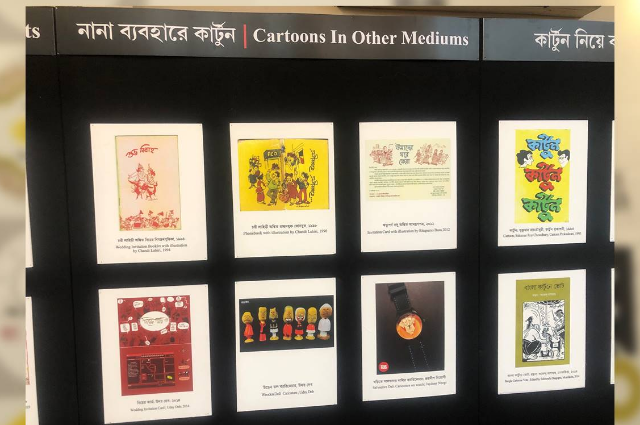
The cartoon plays an important aspect in society and can have impacts in a variety of forms. The cartoon exhibition displayed pictures and frames depicting characters, scenarios, stories, media pictures, movies etc. The hall was well decorated and there was a good count of visitors throughout the days for all the dates everyone was moving around with interest, curiosity, and attention. Sometimes known characters' figures, faces, and stories added interest and there was hustle and bustle amongst all viewers and spectators across age groups.
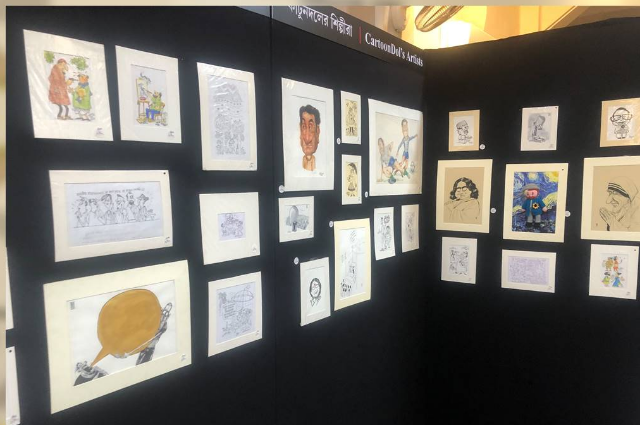
Additionally, there were books sold on cartoons and other interesting areas related to cartoons and even provision that outsiders and viewers could draw their cartoons out of their imaginations and a table at the center for facilitating this, and small cards and white papers were provided with pen and pencil for drawing. There were volunteers taking care of this and the variety of cartoons that came up and was been drawn was overwhelmingly innovative vast variety, and beyond limits.
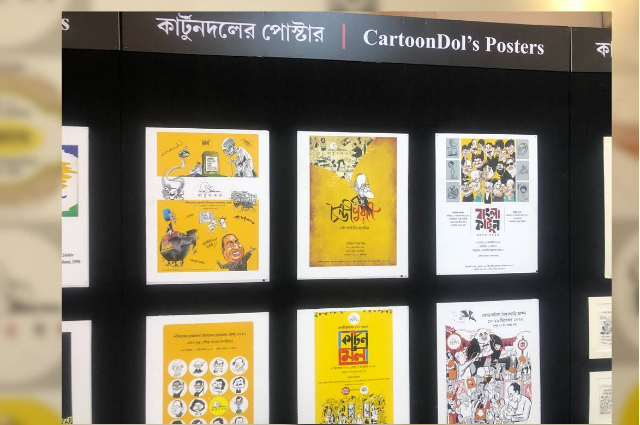
Cartoons are an important tool for viewing our contemporary society from the lens of satire, dark comedy, intellect, and critical viewpoint as well as for simple joy and laughter. Many big statements could be made through the efficient use of simple cartoons that a thousand words fail to achieve in properly expressing. The hilarious, enjoyable yet satirical world of cartoons created by cartoonists is not only a learning opportunity for all to learn to appreciate and look into our contemporary society and the challenges and opportunities it provides from a different perspective. Cartoons can be an efficient educational tool at the primary, secondary, and tertiary levels of education if used efficiently. Cartoons have made it deep in roads to widely divergent arenas like politics, literature, education, society, culture, sports, religion, tradition, heritage, news, international affairs, environment, theatres, movies, folklores, folktales, fables, idioms, proverbs, lullabies, songs and lyrics, graffiti, modern art, and street art around the globe in an exponential fashion.
The experience was enriching for all and added a new dimension to the environment and was very unique. Various kinds of art exhibitions are more common in Kolkata; but, this cartoon exhibition cum fair was one of its kind and surely added a lot of interest and value. The program was very well attended with all age groups and gender being well represented. The spontaneous large participation of young kids and school children has been the biggest success of this new and rare initiative.
